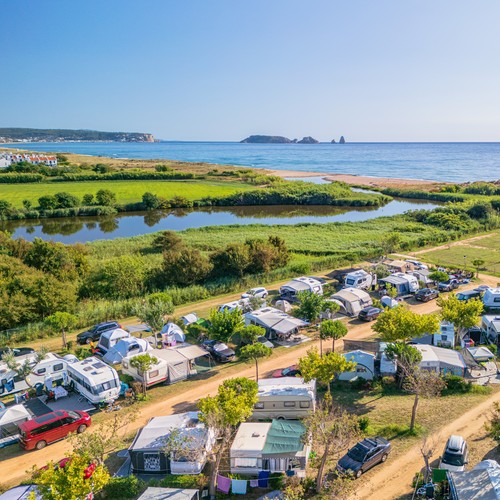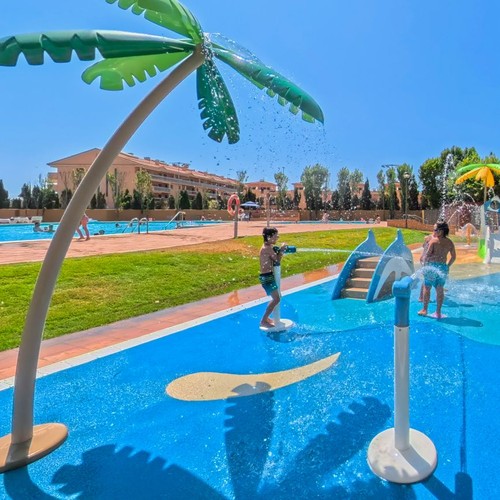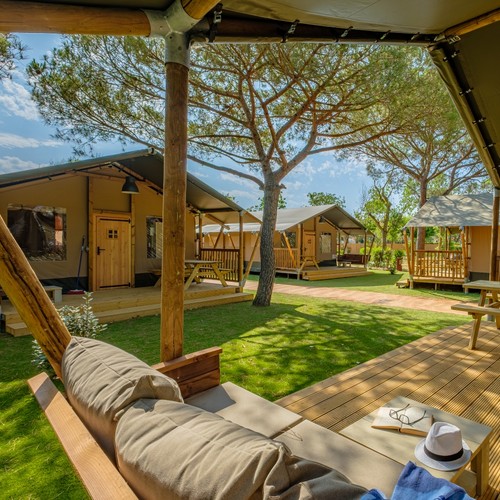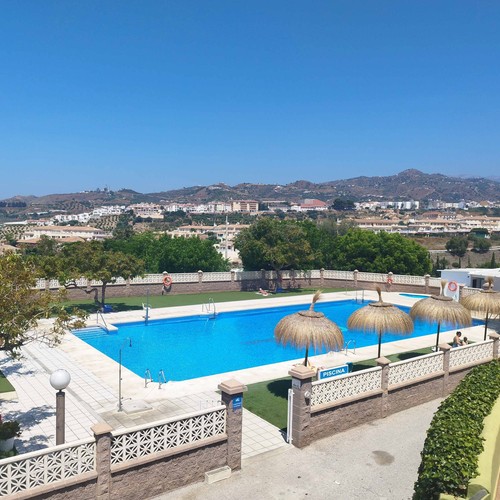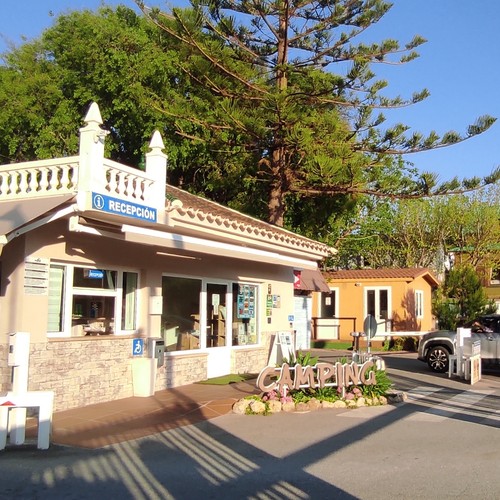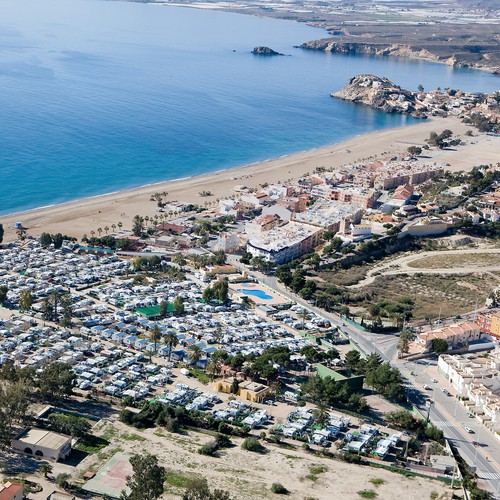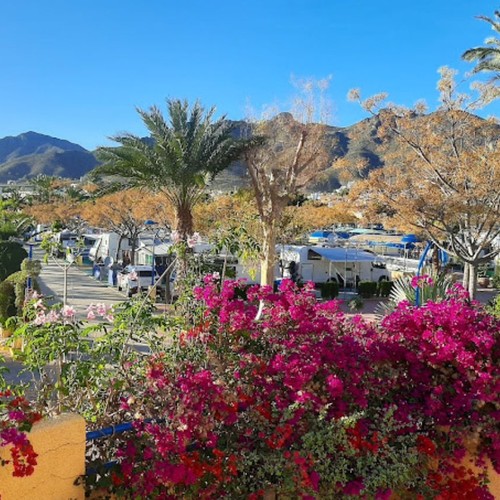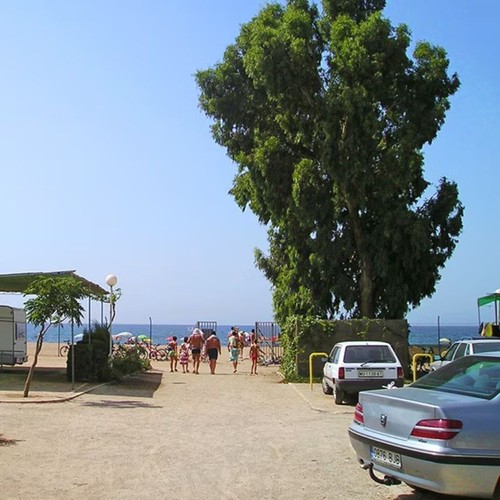Camping and Campsites in Spain
1141 campsites
Spain is a country with an infinite number of facets, from picturesque mountain villages to flowery white dream beaches or lively metropolises where life is raging, and from unique cultural monuments to breathtaking mountains or world-famous festivals. What is the best way to discover this diversity on vacation? Camping in Spain, of course. On our website you will find simple and inexpensive campsites as well as luxurious offers with five-star feeling, a campsite directly at the sea or in the country's interior, in the neighborhood of metropolises like Barcelona and Madrid or in wild solitude. We present you the most beautiful destinations for camping in Spain!
The Most Beautiful Destinations for Camping in Spain
Camping on the Coast of Spain
In addition to fascinating cities and monuments, Spain is rich in beaches for swimming, sunbathing and all kinds of water sports. Especially popular for camping, is the Costa Brava in Catalonia right near Barcelona. The Costa Brava combines sea and mountains - everything a camper's heart desires. Well equipped campsites are also waiting for you at the Costa Valencia, which includes some real party beaches, as well as the Costa Blanca around Alicante. A bit wilder and very green is the Costa Verde in Asturias. Whether you're looking for party fun and wide, crowded sandy beaches or small, romantic coves, you'll find both when camping in Spain. With the right campsite, you'll be able to enjoy the best of both worlds.
Camping in the Mountains Spain
You want to go for long hikes and enjoy spectacular views while camping in Spain? Then we recommend, for example, a trip to the Cantabrian Mountains. Here several national parks are waiting for nature lovers. Or you drive to the border to France in the Pyrenees Mountains and look for a campsite in dreamlike wild nature. The view of the rugged mountain peaks alone will reward you every day. By the way, the sea is not far away. The Sierra de Grazalema is the first nature park of Andalusia and worth a longer visit.
Unique Cities of Spain
Camping in Valencia
Valencia is not only the birthplace of paella. In addition to great beaches, the port city has sights like the thousand-year-old El Carmen district with its medieval buildings, more than 30 museums, a cathedral, various nature parks and much more to offer. Camping sites in Valencia are also plentiful.
Camping near Barcelona
It is not by chance that many Spain lovers call Barcelona their favorite city. Here world famous buildings like the Sagrada Familia meet impressive museums and archaeological sites. Countless restaurants, a buzzing nightlife and a diverse cultural landscape further contribute to an unforgettable stay in Catalonia. We have listed the most beautiful campsites near Barcelona for you here on the website.
Camping in Madrid
With a campsite in Madrid you are far away from the sea. But this is probably the only disadvantage of the Spanish capital. After all, sights like the Cathedral of Santa María la Real de la Almudena, the street Gran Via or the Museum Naval await you, not to mention the vibrant nightlife of the metropolis. Here on the website you can find the most comfortable campsites in Madrid.
Experience the Other Side of Majorca
Get to know Majorca from another perspective: Camping is one of the best, most relaxing ways to enjoy the island. Surrounded by nature and far from the party hot-spots, you’ll come across some of our insider tips: Beautiful bays, old mountain villages, orange groves, and much more await you! We’ve put together a list of campsites on Majorca for you here.
Tenerife: A Dream Destination for Sun-Seeking Athletes
Thanks to its mild climate year-round, Tenerife is the perfect destination for travellers looking to relax on a sunny beach or to keep active in the great outdoors. Gorgeous coves, an exciting volcanic landscape, countless hiking paths, spectacular scenic roads, and great campsites: Tenerife has something for everyone! You’ll find a selection of campsites on Tenerife on camping.info.
Are you curious? Then start looking for a campsite in Spain right here on the website.
What Campers Should Know About Camping in Spain
Mind the Gross/Net Pricing
As in some other countries in Europe, campsites in Spain charge a visitor’s tax. Additionally, many sites charge a value-added tax (VAT) of 10% — the IVA, as it’s called here, is not typically included in the listed prices. When you eat out at a restaurant, though, you should check to see if the IVA is included in the price or not!
Official Proof is Required for Driving 3rd-Party Vehicles
Are you on the road with a motorhome that belongs to your parents, or did you borrow a camper van from your friends for your trip around Spain? If the driver doesn't own the vehicle, you’ll need a notarised document showing they have the right to use it.
Know Your Colours — Parking
It’s not always easy to find a parking space. When you’ve spotted a free space, pay attention to the coloured markings on the roadside! Only white markings mean you can park in the space free-of-charge. Yellow means parking is prohibited, blue indicates metered parking, and green lets you know that the spot is reserved for residents.
Tolls Are the Rule, Not the Exception
There are tolls on the majority of motorways in Spain. You’ll recognise the toll roads by the traffic signs that read “Autopista de peaje”. You can usually pay tolls with Eurocard or Mastercard, but to be safe, make sure you also always have cash on hand.
Filling up Gas Cylinders
At many Spanish campsites, only butane is sold, which you’ll recognise by the blue colour of the cylinders. If you need propane, you can frequently get it — in grey cylinders — at petrol stations.
Keep a Warning Sign on Board
In Spain, you’re required to display a red-and-white striped warning sign on vehicles with protruding loads. What counts as “protruding” depends on the total vehicle length as recorded in the vehicle’s registration papers; the vehicle plus the protruding load must be less than or equal to this recorded length plus 10%. If you have a rear-mounted rack or carrier attached to your car, you’ll need to bring a warning sign along.
Know Your Limits
As delicious as sangria, San Miguel, La Rioja, and other Spanish alcohols are, keep in mind that in Spain, you’re considered legally impaired with a BAC 0.05% or 50 mg! Breaking this law can land you a fine of at least €500. And if you’ve had your driving licence for less than two years, the limit is only 0.03% or 30 mg.
Pay Fines ASAP
You’ve read these tips, and you’ll try your best to be careful. Still, something could happen, and you could wind up with a citation. If you do, you should pay the fine immediately. The fines in Spain are already quite steep, and if they aren’t paid within 20 days, the costs will double!
Popular Camping Regions in Spain
2 Things Campers in Spain Should Know
Is Camping with a dog possible in Spain?
On the majority of Spanish campsites, campers with dogs are welcome. Outside the campsites, however, there are sometimes strict rules about bringing your four-legged friend along. Note that dogs are not allowed on public transport or in restaurants and bars. Fortunately, the weather is usually very nice, so you can make yourself comfortable together with your four-legged friend on the outdoor terraces that can be found almost everywhere. You can find the best places and more tips for camping with a dog here on our topic page.
Fancy an adventure with your four-legged friend in Spain? Find and book a dog-friendly campsite in Spain now
Is Wild camping allowed in Spain?
As tempting as it is in many places in Spain, wild camping is unfortunately prohibited in this country. The Guardia Civil strictly controls and even uses helicopters - especially in the touristy regions - to track down wild campers. High fines are imposed. The penalties are especially horrendous if you are caught in the nature reserves and parks.
So it's best to stick to the beautiful campsites you can find here on camping.info. Directly book one of the available campsites in Spain
 Deutsch
Deutsch English
English Nederlands
Nederlands français
français italiano
italiano Español
Español български
български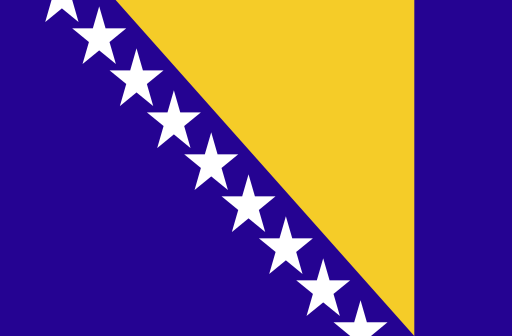 босански
босански čeština
čeština dansk
dansk Ελληνικά
Ελληνικά eesti
eesti suomi
suomi hrvatski
hrvatski magyar
magyar lietuvių
lietuvių latviešu
latviešu norsk bokmål
norsk bokmål polski
polski português
português română
română русский
русский slovenčina
slovenčina slovenščina
slovenščina српски
српски svenska
svenska Türkçe
Türkçe